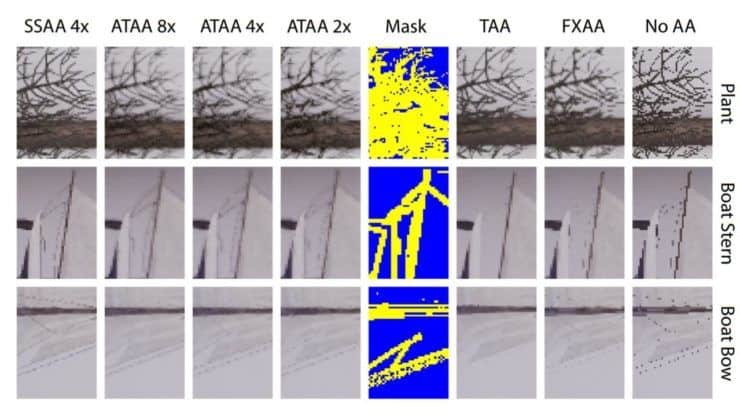Nvidia Ray Tracing made a debut at GDC 2018. Nvidia Ray Tracing was also accompanied by Microsoft DXR API. We also know that the first game that will implement this new tech is Metro Exodus and from what we have seen so far, the game is very pretty, to say the very least.
Nvidia Ray Tracing improves lighting, real-time reflections and ambient occlusion techniques. Nvidia is now adding Ray Tracing to Temporal Anti-aliasing and calling it Adaptive Temporal Antialiasing. This technique will remove ghosting and blurring, which occurs when we use standard Temporal Antialiasing.
We have also learned that the current generation of graphics cards won’t support Nvidia Ray Tracing which is not surprising keeping in mind how intensive the technology is. You will need an Nvidia next-generation GPU in order to make it work. We have heard that these graphics cards are around the corner so you won’t be waiting too long now.
We designed our method for compatibility with conventional game engines and to harness the strengths of TAA, while addressing its failures unequivocally and simply. The core idea is to run the base case of TAA on most pixels and then, rather than attempting to combat its failures with heuristics, output a conservative segmentation mask of where it will fail, and why. We then replace the complex heuristics of TAA at failure pixels with robust alternatives, adapting to the image content.
Temporal Anti-aliasing is able to deliver image quality lose to 8x Super-Sampling Anti-Aliasing and it is impressive that it is able to stay in the 33ms standard that we see in major titles. We got a demo in Unreal Engine 4, the scene was of a modern day house. We do not much about the system that was being used for the demo but we do know that the demo was powered by the Nvidia Titan V. Keeping that in mind, it is more than likely that the upcoming graphics cards will support Nvidia Ray Tracing and Temporal Anti-aliasing.

We know that Ray Tracing won’t be coming out soon because it depends on Microsoft’s DXR API, which is not supported by most graphics cards on the market right now. It could be a while before we get support for the API.
The specific number of rays identified for antialiasing varies per frame according to the segmentation mask. In addition, the FXAA pass adds as much as 0.75ms when the whole frame is new, but in practice scales linearly down to 0 as fewer of the pixels are identified for FXAA in the mask. Under typical camera motion fewer than 5% of pixels are selected for FXAA. Our ATAA solution integrated successfully operates within the 33 millisecond frame budget for a typical UE4 frame across all settings. Operating within a total frame budget of 16ms, while also ray tracing 1spp shadows at screen resolution, is possible with the 2× and 4× ATAA variants. As DXR is an experimental feature of Windows 10 v1083, we are optimistic that performance will improve as the runtime and driver receive important release optimizations.
It will also be up to the developers to decide whether or not they want to include these features in the games that they make. Nvidia has a big budget when it comes to such things and I am pretty sure that the company will be taking advantage of its relations with different developers in order to bring Nvidia Ray Tracing to more games.
The current Pascal cards have been around for more than 2 years now. Keeping that in mind, it is safe to assume that the Volta graphics cards will also be around for that amount of time. If that is the case and Nvidia wants to make these features mainstream then the upcoming next-generation graphics cards will need to support these features.
We have demonstrated a practical solution to this problem; so practical that it runs within a commercial game engine, operates in real-time even on first-generation real-time ray tracing commodity hardware and software and connects to the full shader pipeline. Where film renderers choose pixels to adaptively supersample by first casting many rays per pixel, we instead amortize that cost over many frames by leveraging TAA’s history buffer to detect aliasing. We further identify large, transient regions of aliasing due to disocclusions and employ post process FXAA there rather than expending rays. This hybrid strategy leverages the advantages of the most sophisticated real-time antialiasing strategies but avoids their limitations.
We believe that these new features could have a great impact on gaming and make experiences even better. While support is limited right now, it is just a matter of time before the next generation graphics cards come out and this feature is introduced into the mainstream. As of right now, we know that the next Metro will use this feature and we also heard that the upcoming Shadow of the Tomb Raider will also support Nvidia Ray Tracing.
We know that Nvidia is going to be talking about these techniques at SIGGRAPH 2018, if that is something that you are interested in then stay tuned to SegmentNext for coverage of the event and further news regarding the matter.
